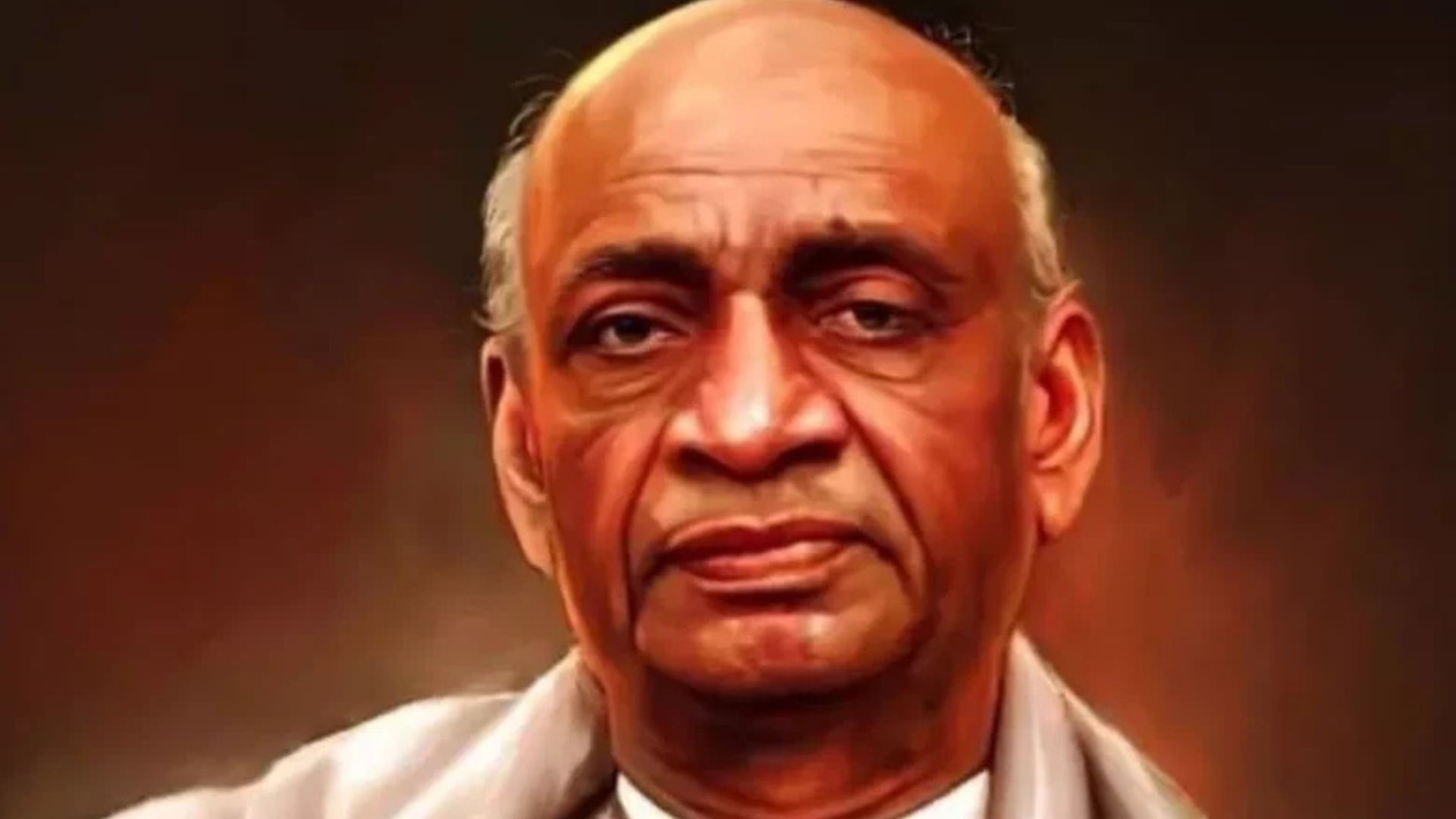
As India celebrates the birth anniversary of Sardar Vallabhbhai Patel, it is essential to reflect on his towering contributions, not just to the political landscape of post-independence India, but also to his visionary stance on unity, Hindutva, and the shaping of the nation’s identity. Fondly known as the “Iron Man of India,” Patel’s ideas and actions have left an indelible mark on Bharat. Today, his vision of a united India is more relevant than ever, as the country continues to evolve while navigating challenges related to national integration, cultural identity, and constitutional principles.
Hindutva, as a concept of cultural nationalism, emerged during Patel’s time as a way to emphasize India’s unique identity. While the term was popularized by figures like V.D. Savarkar, who viewed it as an affirmation of India’s Hindu heritage, Patel saw it through a broader lens. He recognized Hindutva not merely as a religious concept but as a unifying cultural force that reflected the civilizational values of Bharat. To Patel, Hindutva symbolized a national identity rooted in ancient traditions, providing a sense of belonging to all citizens, irrespective of religion or community.
However, Patel’s approach to Hindutva was pragmatic. While he acknowledged the importance of preserving India’s Hindu roots, he believed that Hindutva must be inclusive. Patel envisaged a united India where people of all faiths—Hindus, Muslims, Sikhs, Christians, and others—could coexist peacefully while embracing a common cultural identity. He believed that national unity could only be achieved through mutual respect and understanding, underpinned by India’s rich heritage.
One of Sardar Patel’s greatest achievements was his successful integration of over 500 princely states into independent India. His steadfast determination and diplomatic finesse ensured that India’s territorial integrity remained intact during a period of immense political and social turmoil. Patel’s leadership was especially critical in preventing India from splintering into multiple fragmented states post-independence.
His handling of the integration of Junagadh, a princely state with a Muslim ruler and a Hindu majority, was a clear example of his resolve. When the Nawab of Junagadh expressed his desire to accede to Pakistan, Patel swiftly intervened. With the support of the Indian Army, Junagadh was annexed into India, and a plebiscite was held, confirming that the majority of its population wanted to remain part of India. This incident demonstrated Patel’s ability to act decisively to protect India’s territorial and cultural unity.
Patel’s commitment to restoring India’s cultural heritage was exemplified in his efforts to rebuild the Somnath Temple. After his visit to Junagadh, Patel saw the dilapidated state of the temple, which had once been a beacon of India’s Hindu civilization. He immediately pledged to restore the temple to its former glory, seeing this as a symbolic act of cultural resurgence.
The rebuilding of Somnath Temple was not just an architectural project but a statement of India’s self-confidence after centuries of subjugation. For Patel, this act symbolized the revival of Bharat’s cultural pride and its rich spiritual traditions. Despite opposition from leaders like Jawaharlal Nehru, who believed that state involvement in religious matters conflicted with secularism, Patel stood firm. His determination to restore the temple illustrated his belief that India’s secularism did not mean erasing its heritage but embracing and celebrating it.
One of the most significant issues that has come to define modern India is the status of Jammu and Kashmir. Patel’s views on this matter offer valuable insights into how he envisioned a united India. While Patel is often remembered for his role in integrating princely states, his stance on Jammu and Kashmir has sparked considerable debate. Patel opposed the special status granted to Jammu and Kashmir under Article 370 of the Indian Constitution, which allowed the state a degree of autonomy that was not extended to other parts of India.
Patel believed that such provisions were counterproductive to the goal of national unity. He argued that the integration of Kashmir into India should be treated like any other state, without special privileges that could potentially foster separatism. Although Article 370 was included in the Constitution due to a political compromise at the time, Patel remained skeptical of its long-term implications.
Today, with the abrogation of Article 370 in 2019, Patel’s vision of a fully integrated Jammu and Kashmir has become a reality. The move reflects Patel’s belief that national unity requires equal treatment for all states and that special privileges granted to any one region could undermine the cohesion of the nation. Patel’s legacy continues to inform the policies that drive India’s quest for unity and national integration.
Unlike his contemporary, Jawaharlal Nehru, who viewed organizations like the Rashtriya Swayamsevak Sangh (RSS) with suspicion, Patel recognized the significance of grassroots mobilization and cultural identity. Though Patel had his reservations about some of the RSS’s methods, he appreciated their dedication to national service and their commitment to the Hindu ethos.
In the aftermath of Mahatma Gandhi’s assassination, Patel initially banned the RSS, suspecting that its ideology had contributed to an atmosphere of communal tension. However, after thorough investigations, Patel found no evidence of RSS involvement in the assassination and lifted the ban. His decision reflected his belief in dialogue and reconciliation over ideological rigidity.
Patel’s pragmatic leadership extended to his interactions with the RSS, whom he encouraged to work within the democratic framework of India’s Constitution. He saw the organization’s potential for contributing positively to nation-building and urged them to focus on service, discipline, and national integration. Patel’s approach was one of inclusion, where even those with differing ideologies could be brought into the national mainstream.
In today’s Bharat, Patel’s vision of unity and inclusivity holds immense relevance. As the country grapples with challenges related to communalism, regionalism, and identity politics, Patel’s legacy serves as a reminder of the importance of national integration. His belief in a strong, united Bharat, where all communities could coexist peacefully, is a guiding principle for contemporary India.
The abrogation of Article 370, the rebuilding of Ram Temple in Ayodhya, and the emphasis on cultural nationalism through initiatives like “Ek Bharat Shreshtha Bharat” are all reflections of Patel’s vision of a unified, strong India. His emphasis on nation-building through cultural pride and mutual respect continues to inspire leaders and policymakers today.
Patel’s understanding of Hindutva as a unifying force—rather than a divisive one—offers valuable lessons for the present. His emphasis on cultural pride, alongside inclusivity and secularism, is a balanced approach that India needs to maintain its pluralistic identity while preserving its civilizational roots.
Sardar Vallabhbhai Patel remains a towering figure in Indian history, not only for his role in the independence movement but also for his vision of a united and strong Bharat. His pragmatic approach to Hindutva, coupled with his unwavering commitment to national integration, continues to resonate in today’s political and social discourse. As we reflect on his legacy, it is clear that Patel’s vision for India was one of unity through cultural pride, inclusivity, and strong governance. His contributions, especially his stance on issues like Article 370 and his dedication to preserving India’s Hindu heritage, remain as relevant today as they were during his lifetime. Sardar Patel’s vision of a united Bharat stands as a beacon of strength and guidance for the future of India.
Shri Siddhartha Dave is an alumnus of United Nations University, Tokyo and a former Lok Sabha Research Fellow. He writes on Foreign Affairs and National Security















